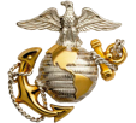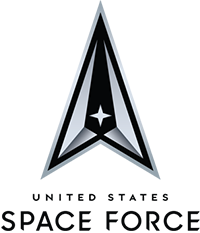Joining & Eligibility
ASVAB Sample Questions
ASVAB Test
Before you take the Armed Services Vocational Aptitude Battery (ASVAB), study this selection of sample test questions. Each question corresponds to one of the topics you can expect to find on a real ASVAB test.
General Science
General science tests the ability to answer questions on a variety of science topics drawn from courses taught in most high schools. The life-science items cover botany, zoology, anatomy and physiology, and ecology. The earth and space science items are based on astronomy, geology, meteorology and oceanography. The physical science items measure force and motion mechanics, energy, fluids, atomic structure and chemistry.
1. NaCl is more commonly known as:
- nickel chlorine
- pepper
- salt
- sugar
Arithmetic Reasoning
Arithmetic reasoning tests the ability to solve basic arithmetic problems encountered in everyday life. One-step and multistep word problems require addition, subtraction, multiplication, division and choosing the correct order of operations when more than one step is necessary. The items include operations with whole numbers, operations with rational numbers, ratio and proportion, interest, percentage and measurement. Arithmetic reasoning is one factor that helps characterize mathematics comprehension, and it also assesses logical thinking.
2. If there are three quarts of gas in a gallon container, how full is the container?
- 50%
- 60%
- 75%
- 80%
Word Knowledge
Word knowledge tests the ability to understand the meaning of words through synonyms — words having the same or nearly the same meaning as other words. The test is a measure of just one component of reading comprehension, since vocabulary is one of many factors that characterize reading comprehension.
3. Observe most nearly means:
- maintain
- watch
- organize
- protest
Paragraph Comprehension
Paragraph comprehension tests the ability to obtain information from written material. Students read different types of passages of varying lengths and respond to questions based on information presented in each passage. Concepts include identifying stated and reworded facts, determining a sequence of events, drawing conclusions, identifying main ideas, determining the author's purpose and tone, and identifying style and technique.
Nations are political and military units, but they are not necessarily the most important units in economic life, nor are they very much alike in any economic sense. All that nations really have in common is the political aspect of their sovereignty. Indeed, the failure of national governments to control economic forces suggests that nations are irrelevant to promoting economic success.
4. According to the paragraph, the economic power of nations is:
- controlled by political and military success
- the basis of their political success
- limited to a few powerful nations
- relatively unimportant
Mathematics Knowledge
Mathematics knowledge tests the ability to solve problems by applying knowledge of mathematical concepts and applications. The problems focus on concepts and algorithms, and involve number theory, numeration, algebraic operations and equations, geometry, measurement and probability. Mathematics knowledge is one factor that characterizes mathematics comprehension; it also assesses logical thinking.
5. If x + y = 2 and x − y = 1, then:
- x = 1, y = 1
- x = 2, y = 1
- x = 3/2, y = 1/2
- x = 0, y = 2
Electronics Information
Electronics information tests understanding of electrical currents, circuits, devices and systems. Electronics information topics include electrical circuits, electrical and electronic systems, electrical currents, electrical tools, symbols, devices and materials.
6. The rotor of a generator moves inside a circle of:
- batteries
- light bulbs
- heating coils
- magnets
Auto and Shop Information
Auto and shop information tests aptitude for automotive maintenance and repair, and wood and metal shop practices. The test covers several areas commonly included in most high school auto and shop courses, such as automotive components, automotive systems, automotive tools, troubleshooting and repair, shop tools, building materials, and building and construction procedures.
7. The coolant in a car flows through the:
- differential
- brakes
- distributor
- engine block
Mechanical Comprehension
Mechanical comprehension tests the understanding of principles of mechanical devices, structural support and properties of materials. Mechanical comprehension topics include simple machines, compound machines, mechanical motion and fluid dynamics.

8. What simple machine magnifies effort when the handle of this corkscrew is pulled up?
- a lever
- a screw
- a wheel
- a wedge
Assembling Objects (MEPS Test-Takers Only)
Assembling objects tests the ability to determine how an object will look when its parts are put together.

9. Which figure best shows how the objects in the left box will appear if they are put together?
- A
- B
- C
- D









